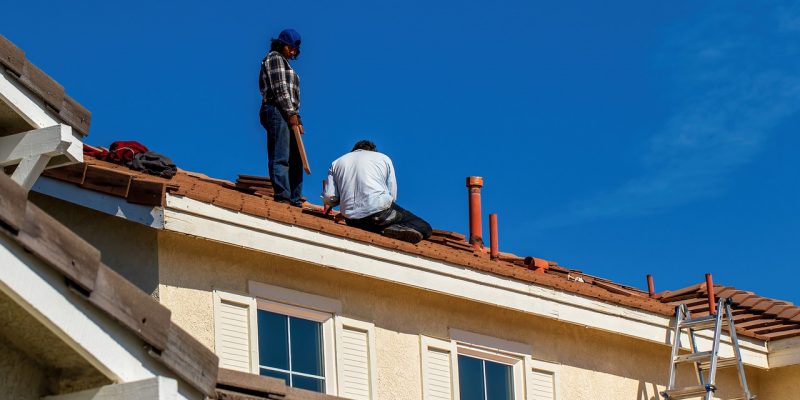In an era of rapid innovation and technological advancements, no aspect of our built environment should be overlooked regarding future-proofing. One crucial area that often gets neglected is the humble roof. Traditional roofing materials are prone to wear and tear, limited lifespans, and inadequate insulation. However, a solution promises to revolutionize the roofing industry – polycarbonate panels.
The Energy Efficiency and Durability of Polycarbonate Roof Panels
Polycarbonate roof panels’ energy efficiency and durability make them a game-changing solution for future-proofing roofs. Traditional roofing materials often lack adequate insulation, leading to high energy consumption for heating and cooling. On the other hand, polycarbonate panels offer excellent thermal insulation properties, minimizing heat transfer and reducing the need for artificial cooling or heating. This results in significant energy savings, making them a sustainable choice for residential and commercial buildings.
Polycarbonate panels are known for their durability. They are highly resistant to impact, extreme weather conditions, and UV radiation, ensuring they maintain their structural integrity over time. Unlike traditional roofing materials that may require frequent repairs or replacements, polycarbonate panels have a long lifespan, making them a cost-effective choice in the long run. Additionally, their lightweight nature reduces the stress on the building’s structure, preventing the potential for damage and ensuring their longevity.
Polycarbonate roof panels offer a sustainable and efficient solution for future-proofing roofs. With their excellent energy efficiency and durability, they contribute to reducing environmental impact and improving the overall performance of buildings. As a superior option compared to traditional roofing materials, polycarbonate panels have the potential to revolutionize the roofing industry and reshape the way we think about roofs in terms of sustainability and longevity.
Guide to Installing Polycarbonate Roof Panels
Installing polycarbonate roof panels requires careful planning, proper preparation, and precise execution to ensure a durable and effective roofing solution. Polycarbonate panels are famous for their lightweight nature, impact resistance, and high light transmission, making them suitable for various applications such as greenhouses, patio covers, and skylights. Following a guide can help ensure a successful installation process.
Preparation and Planning: Begin by measuring the area where the polycarbonate panels will be installed. Consider factors such as slope, drainage, and the direction of prevailing winds. Choose the appropriate panel thickness based on the intended use and local weather conditions. It’s also important to check local building codes and regulations to ensure compliance.
Gathering Materials: Besides the polycarbonate panels, gather all necessary materials, including fasteners, sealing tape, screws, washers, and profiles designed for polycarbonate panel installation. Opt for materials compatible with polycarbonate that will not cause damage over time.
Creating the Substructure: Construct a sturdy, often wood or metal, to support the polycarbonate panels. The substructure should accommodate the panels’ dimensions, allow for proper drainage, and provide sufficient support to prevent sagging.
Panel Cutting and Placement: Cut the polycarbonate panels to the required size using appropriate tools, such as a circular saw with a fine-toothed blade or a specialized polycarbonate-cutting tool. Place the panels on the substructure, ensuring they align correctly and have adequate overlap for sealing.
Fastening and Sealing: Use appropriate fasteners like self-drilling screws with rubber washers to attach the panels to the substructure. Fasten the panels along the edges and at regular intervals across the span. Apply sealing tape or gaskets to the panel edges to prevent water infiltration and ensure a watertight seal.
Expansion and Contraction: Polycarbonate panels expand and contract with temperature changes, so allowing this movement using profiles or connectors that accommodate expansion is crucial. It prevents stress on the panels and ensures their longevity.
Ventilation and Drainage: Ensure proper ventilation by leaving gaps at the top and bottom of the panels. It prevents condensation buildup and helps regulate temperature. Adequate drainage channels and slopes should also be incorporated to avoid water pooling and potential damage.
Finishing Touches: Trim any excess material or overhanging edges for a neat appearance. If necessary, install end caps or flashing to protect the edges from the elements further.
Regular Maintenance: After installation, periodically inspect the panels for damage, ensure proper drainage, and clean the surface as needed to maintain optimal light transmission.
How to Keep Your Polycarbonate Roof Panels in Top Condition
You can take several key maintenance steps to keep your polycarbonate roof panels in top condition. It is essential to regularly clean the panels to remove any dirt, debris, or grime that may accumulate over time. It can be done with a mild soap, water solution, soft cloth, or sponge. Avoid using harsh chemicals or abrasive materials that could scratch or damage the panels.
In addition to cleaning, inspecting the panels for any signs of damage or wear is recommended. Look for cracks, chips, or discoloration, as these could indicate a potential problem that needs to be addressed. If any damage is found, it should be repaired as soon as possible to prevent further deterioration.
Consider applying a protective coating or UV-resistant film to the panels to help extend their lifespan and maintain their appearance. It will help to prevent fading, yellowing, or brittleness that can occur over time due to exposure to sunlight and harsh weather conditions.




















